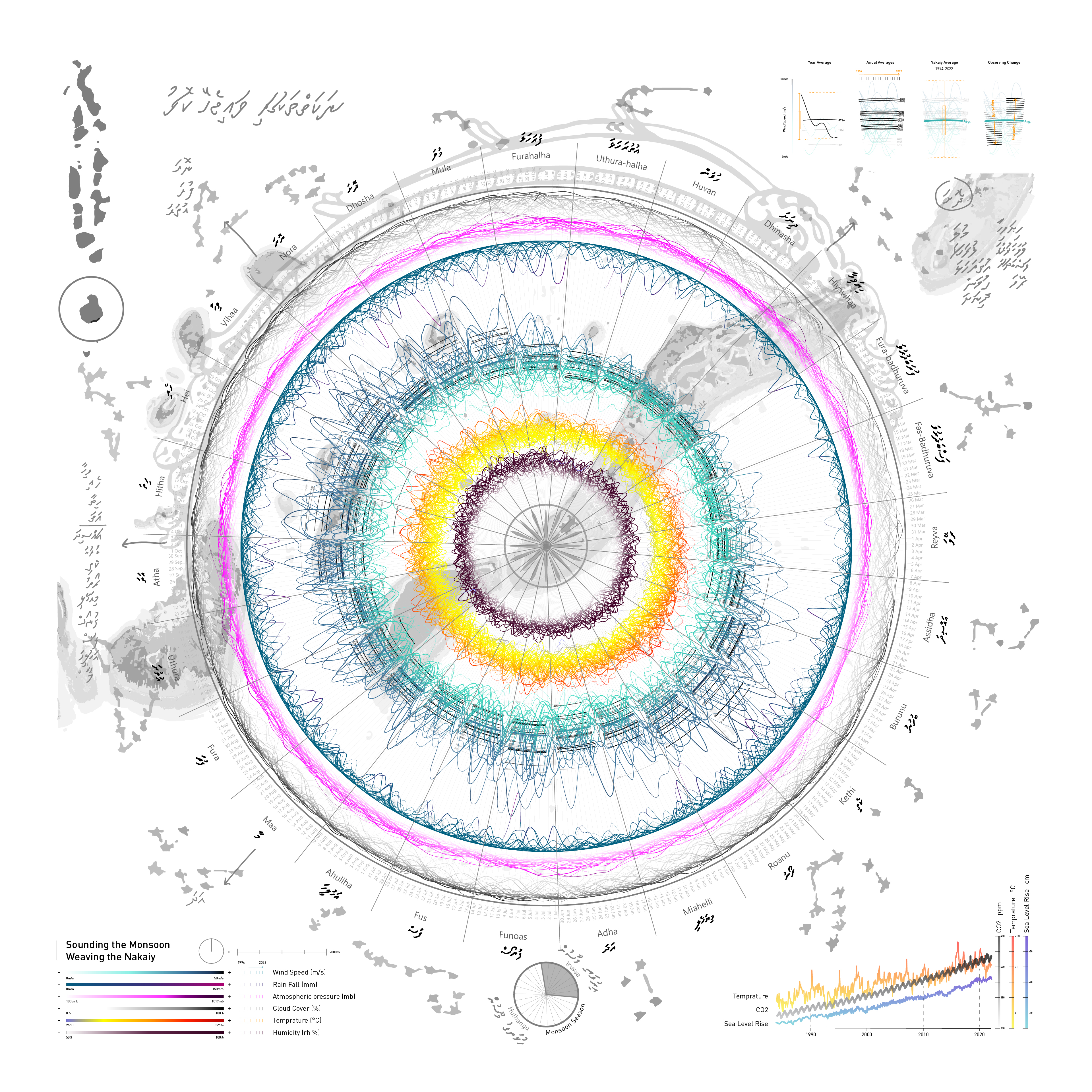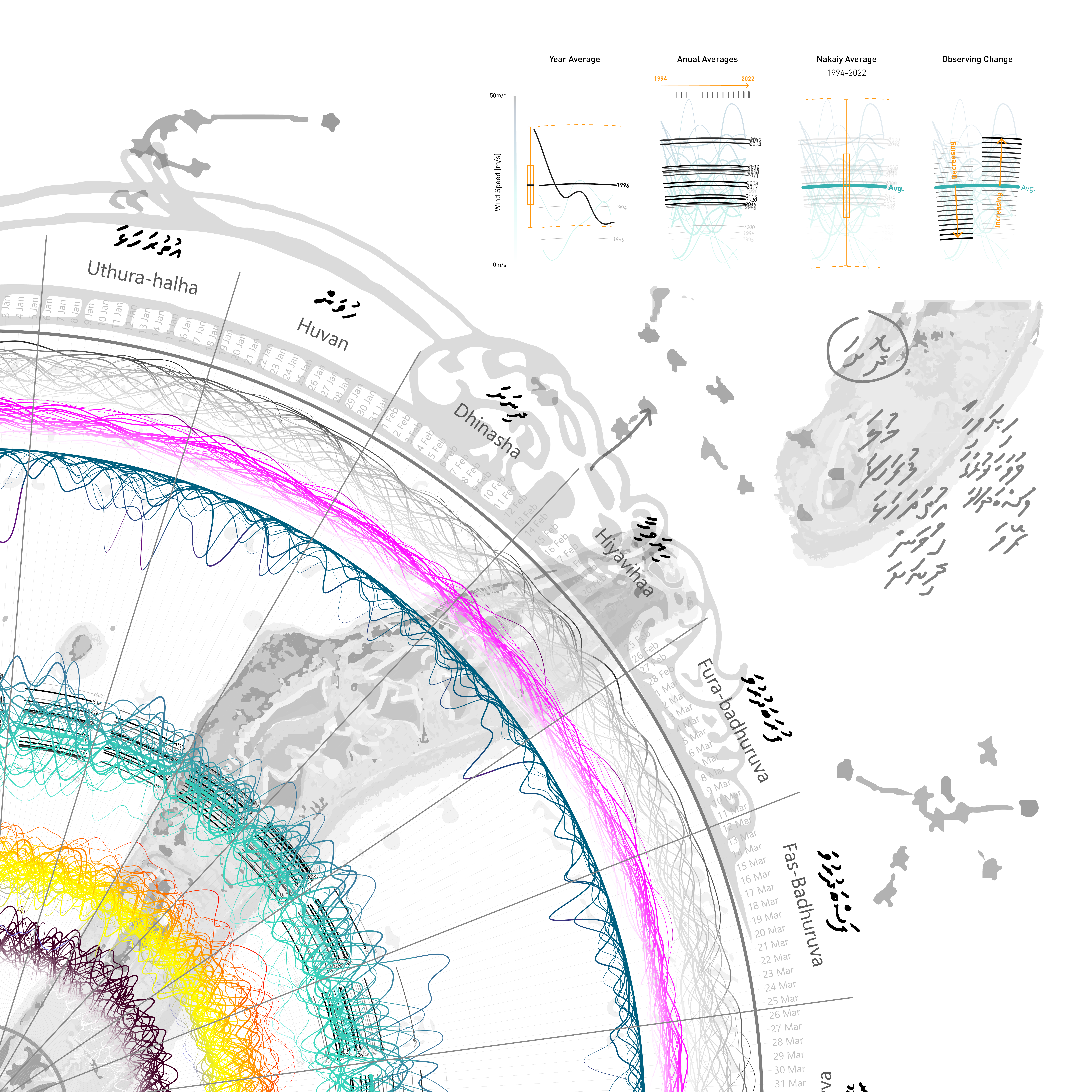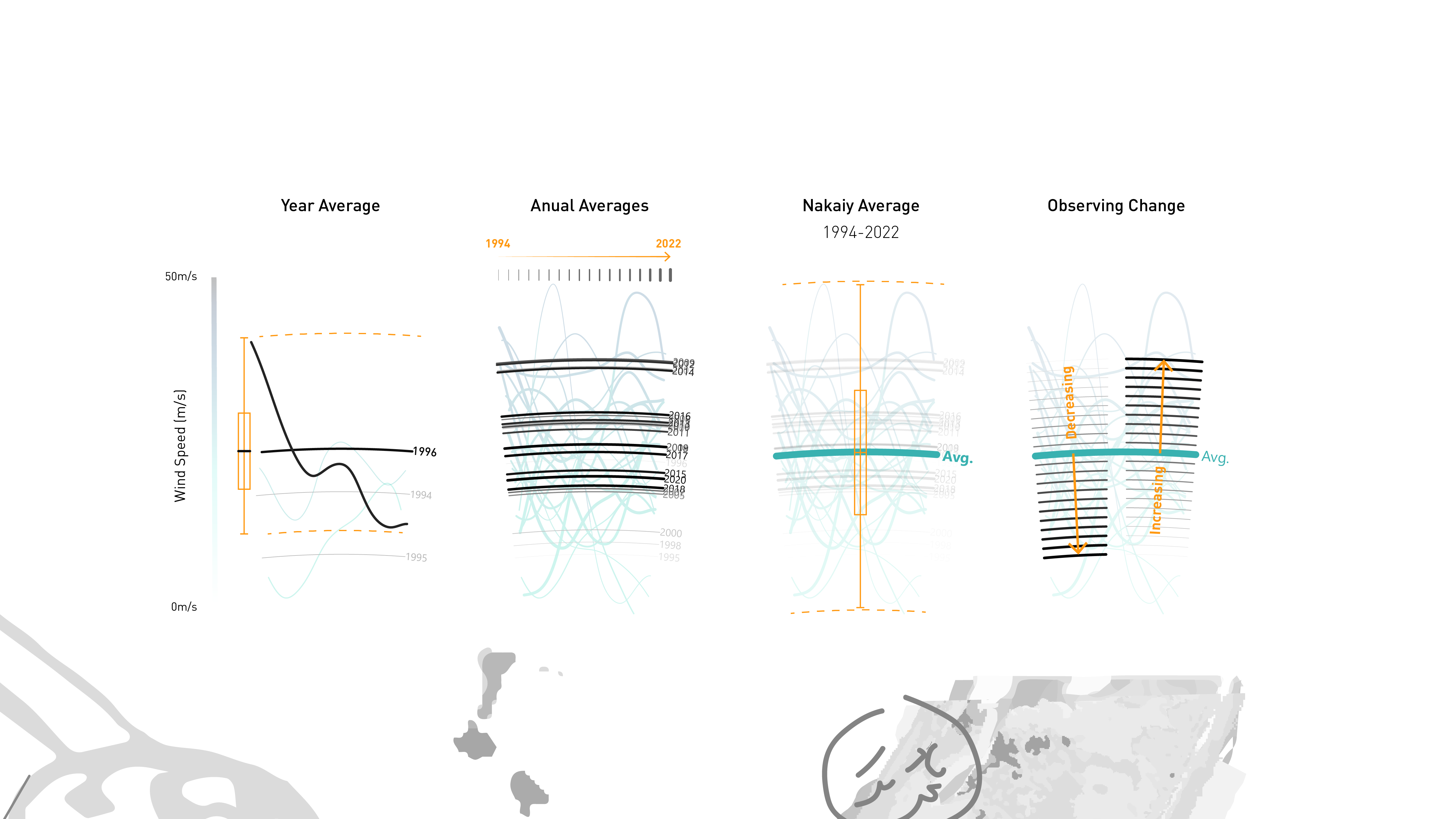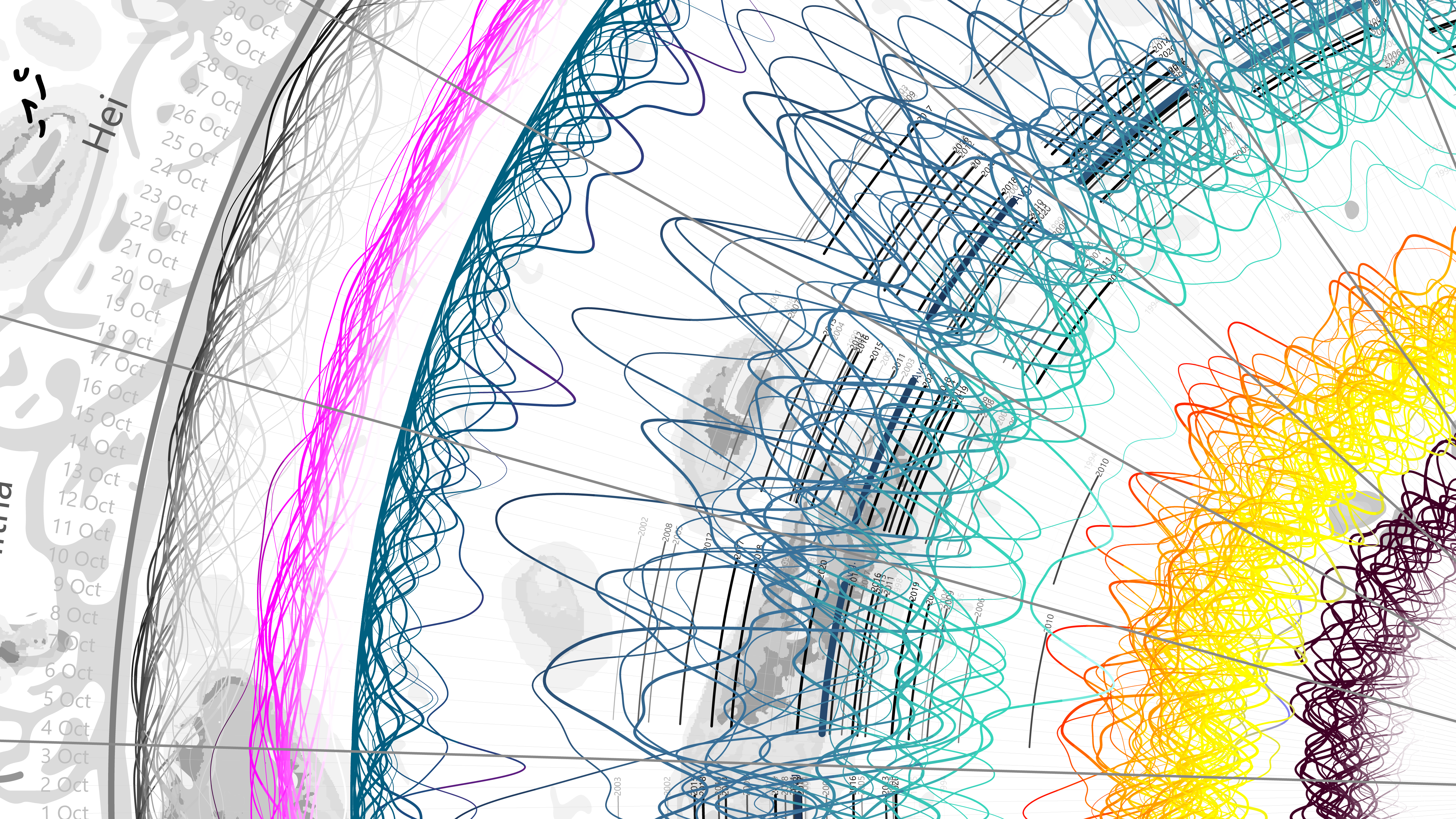Nakaiy Almanac
1994-2022

The Nakaiy Almanac endeavours to visually and quantitively
interweave the embodied indigenous knowledge across Nakaiy periods, engaging in
a dialogue with typically inaccessible quantitative daily data sourced from
meteorological archives starting from 1994.
The value and knowledge of the Nakaiy extends beyond the available weather data, enabling knowledge holders and the calendar to reach further back in time. The data presented includes windspeed, rainfall, atmospheric pressure, cloud cover, temperature, and humidity, all directly or indirectly connected to core observations within the Nakaiy. By mapping these variables, the visualisation exposes both macro and micro patterns, as well as yearly anomalies and extremes. For instance, it showcases differences between the Iruvaa and Hulhangu monsoons, as well as sub-periods within these seasons characterized by higher temperatures, winds, or rainfall. To enhance the comprehension of these patterns over time, varying line weights and colour gradients are employed, signifying changes in patterns through the thickness of lines or the intensity of colour.
The value and knowledge of the Nakaiy extends beyond the available weather data, enabling knowledge holders and the calendar to reach further back in time. The data presented includes windspeed, rainfall, atmospheric pressure, cloud cover, temperature, and humidity, all directly or indirectly connected to core observations within the Nakaiy. By mapping these variables, the visualisation exposes both macro and micro patterns, as well as yearly anomalies and extremes. For instance, it showcases differences between the Iruvaa and Hulhangu monsoons, as well as sub-periods within these seasons characterized by higher temperatures, winds, or rainfall. To enhance the comprehension of these patterns over time, varying line weights and colour gradients are employed, signifying changes in patterns through the thickness of lines or the intensity of colour.



As a technical tool, the Nakaiy Almanac aspires to function
as an almanac that not only values traditional understandings and knowledge of
weather but also provides viewers with insights to interpret current weather
data and patterns through their own embodied understanding and experience of
weather.
While the ability to predict the weather as per past methods may no longer be feasible (given the current trajectory of climate change), the Nakaiy Almanac aims to foster a deeper cultural and locally tangible appreciation of the threats and challenges posed by climate change, without relying on projected Western understandings or framings.
While the ability to predict the weather as per past methods may no longer be feasible (given the current trajectory of climate change), the Nakaiy Almanac aims to foster a deeper cultural and locally tangible appreciation of the threats and challenges posed by climate change, without relying on projected Western understandings or framings.